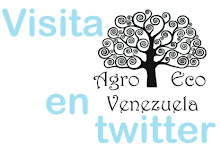Linalool-triggered plant-soil feedback drives defense adaptation in dense maize plantings
Guo et al., 2025
Structured Abstract
INTRODUCTION
Planting crops more densely increases overall yields, but it also raises the risk of pest and pathogen outbreaks. Although plants can modify their architecture to adapt to crowded conditions, how they adjust their immune responses remains largely unknown. Understanding how plants manage these trade-offs is critical for sustainable agriculture, especially in the context of increasing global food demands.
RATIONALE
Plants release chemical cues, such as volatiles, that inform neighbors of environmental conditions. One such compound, linalool, is a constitutively emitted leaf volatile in maize and other grasses. We hypothesized that linalool could act as a signal in densely planted fields, triggering plant-soil feedback that prepares neighboring plants for potential biotic stress. We explored how linalool shapes root signaling, soil microbiota, and ultimately plant defense and growth.
RESULTS
Field surveys revealed that maize plants in the inner rows of densely planted fields suffered less herbivore damage than those at the edges but that they also had reduced growth. Laboratory soil–transplantation experiments confirmed that soils conditioned by high-density plantings decreased plant biomass while enhancing resistance to insects, nematodes, and pathogens. These effects extended across genotypes and species.
Volatile profiling identified linalool as a key compound increasing with planting density. Exposure of maize to synthetic linalool reproduced the feedback effects, which required the presence of a living plant. Mechanistically, linalool activated jasmonate signaling in roots and up-regulated genes that drive the biosynthesis and exudation of the specialized metabolite HDMBOA-Glc. This exudate reshaped the rhizosphere microbiome, selectively enriching bacteria that suppressed plant growth but increased resistance in subsequently grown plants. Soil sterilization and microbial inoculation confirmed that these microbes were essential for the feedback loop.
In plants grown in linalool-conditioned soil, defense-related signaling, particularly salicylic acid signaling, was up-regulated, whereas growth-promoting metabolic pathways were down-regulated. Plants lacking salicylic acid signaling did not show growth-defense trade-offs, confirming salicylic acid’s role in expressing the feedback-triggered defense.
CONCLUSION
This study uncovers a volatile-triggered feedback mechanism through which maize adapts its defense in crowded environments. The constitutive emission of linalool primes neighboring plants by activating root jasmonate signaling, promoting HDMBOA-Glc exudation, and altering the rhizosphere microbiome. This, in turn, leads to elevated defense and suppressed growth in subsequent plants through salicylic acid signaling. These findings shed light on how plants integrate aboveground cues and belowground processes to optimize defense in high-density settings. Harnessing this natural defense pathway through breeding, microbial inoculants, or synthetic biology could enable the development of crops that are more resilient and require fewer chemical inputs.
https://www.science.org/doi/10.1126/science.adv6675



















